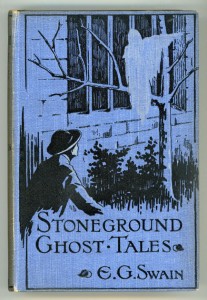In which we self-destruct and lose all our friends by exposing the truth about social networking.
People often ask about the nature of the greydogtales collective. What’s with this authorial “we”? It would be foolish to expose our entire, multinational staff to public scrutiny. Let’s just say that most of my body cells, some of Django‘s, and our mate Trevor, are crucial elements. The rest of my body cells are in the process of starting a rival blog, tentatively entitled “Why We Hate John Linwood Grant And What We’re Going To Do About It”. My partner hovers in the background, pointing out plot-holes and ludicrous character mistakes, which is what I pay her for.
This would be a good point to have a photograph of a lurcher, a nice dog anecdote and then shut up. Or to muse on what a funny old world it is writing horror, and share an amusing incident. Unfortunately, we like to call a spade a potentially seditious element for use in peasant uprisings, and thus feel bound to tell our listeners what all this Internet stuff is really for.
greydogtales came online last year as a terrifying experiment in how to beat agoraphobia by “getting out there”, but without having to open the front door*. It was an all-or-nothing approach. Full fb exposure, commit to three lively (ha!) blog posts a week, register for Pinterest and then forget why, etc. And we also read somewhere that if you’re going to publish your writing, you need to do this sort of thing. Maybe.
*People also ask how I can be agoraphobic and be out dog-walking. The short answer is that if you have two large, hungry longdogs next to you, you feel somewhat less vulnerable. If the whole world came at me all at once, Chilli would have it on its knees in a millisecond. And then Django would pee on it.

But we had a plan for this article, didn’t we? Let’s have a scientific look at social networking in reality. Here are some of the exciting opportunities which are open to you:
- Blogging – what you were thinking about last night after a few beers, which you then decided, for some strange reason, to share with your seven and half followers;
- Twitter – what you are thinking about right now, which might have been more interesting if you’d had a few beers before posting it (non-drinkers might substitute extra caffeine);
- Facebook – a system created by memes so that they could replicate without human assistance;
- Google Plus – a system created by Google so that they could track you down later when they have to ‘adjust’ certain elements of the population;
- Reddit – a bulletin-board system for promoting hearsay to the level of Government policy. Or a way to learn about new stuff. We’re not sure;
- Insertnamehere – the secret network your children are on because everything above is so last-week and only for old people and nerds;
- Pinterest – pictures of cakes.
We’ll now look at two of the most familiar of those in detail, ie sketchily, with no real evidence and in a way which makes people wonder if we’re talking about THEM. Of course we aren’t. We love YOU. It’s the others who puzzle us.
Blogging
Blogging is actually a complex process which allows interesting people to come over as rather dull and rather dull people to sound interesting. For those in between, such as ourselves, it is a stroke of genius. Decades of half-remembered facts, books we once skip-read and whatever magazine is next to the toilet allow us to sound authoritative and well-informed. Suddenly those moth-eaten copies of Smersh the Thunderer in the attic are collector’s gold, to be shown off, and Napoleon’s shoe-size is a gem of arcane knowledge. Blogging justifies an entire life of remembering useless things and forgetting your mother’s birthday and your credit card PIN.
Blogging is also Hard Work. When we started, we looked into the intricate dynamics of which blog posts were read in which hemisphere, when the most shares occurred, what days of the week gave best coverage, how often to post, the prime word-count for a successful post, how to retain readers, how to tag properly and how to optimize for all search engines.
We then entered a lengthy consultation period, and decided, considering all these factors, to shove something out about three times a week, making each post as long as it happened to be. If it’s vaguely relevant, we occasionally ram it onto a Facebook group as well.
It’s important to have a clear focus for your blog, so that readers understand your field of expertise or knowledge. Which is why we cover classic horror authors, weird illustrations, lurchers and other things on a random basis. We want readers who are confused and willing to read anything just to get out of here alive.
It is also essential when you blog to respond to every comment. That’s why people don’t comment – they don’t need more of your dribble. You do, however, hear regularly from Nike Trainers, SEO marketing people and Chinese knock-off sites, so you’re never alone. That’s something.
Facebook is still popular, despite absolutely everyone having migrated to Twitter and Insertnamehere. There are many good reasons to be on Facebook. One is that it makes a nice pinging noise when someone likes or comments on your posts. That’s quite fun. Another is that you can trawl frantically through your feed and timeline for what just happened, and manage to lose the one post you were looking for. It’s like a wordsearch, but you don’t have to buy the little books.

However, after considerable effort, you can achieve a list of crucial contacts, which breaks down as follows:
- People who might be useful to your Grand Plan and help transform you from shoe-shine boy to best-selling author;
- People who you befriended in case you’re missing out on something, which you always are;
- Old friends who you hang onto for nostalgic reasons or because you really fancied them twenty years ago (and still do but daren’t tell them);
- Family members who have hunted you down on-line despite your security measures;
- People who only befriended you to further their own Grand Plan (losers);
- People whose work you idolise but who wouldn’t know you from a can of beans and are too busy working to respond;
- People whose posts worry you so much you keep track of their activity in case you need to ring the CIA very quickly.
If you’re really fortunate, you may also end up with:
- People you actually like because of who they are and what they post.
We’re not sure about this last category. They sound suspicious as well. What are they trying to sell really? But you’d better not unfriend me. I might still be useful, one day, honest.
Another use for Facebook is to join groups. These offer a lively and interactive way to get yourself blocked for promoting your own work all the time, or to discuss Napoleon’s shoe-size at length and learnt the name of his cobblers, but only the ones in Toulouse who no-one else knew about. Somewhere in between, we are forced to admit, there are groups which are quite interesting. Most of these don’t want you. Persevere long enough, however, and Facebook will ask if you if you want to create your own group “Things beginning with V which can be found on Latvian bus seats”. And you’ve made it!
(Actually we quite like some of the groups we’re in, but if we printed that, we might have to be more active and read things properly.)
greydogtales is also supposed to be on Twitter, but we can’t face that level of commitment yet without knowing where the relationship might lead. We’ve been hurt in the past.
And there you have it. The wonderful world of social networks. We remember carbon paper and typewriters, you know. And we probably had relatives who fought in the war for the likes of you…
Next time on greydogtales – Scary Women: Actual, real-life horror authors, Clarissa Johal and Anita Stewart, talk about their fiction, the writing process and why they’d don’t write paranormal romance, thank you for asking.
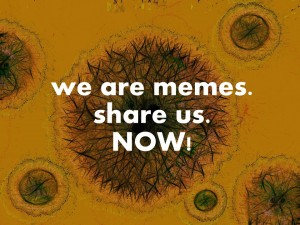

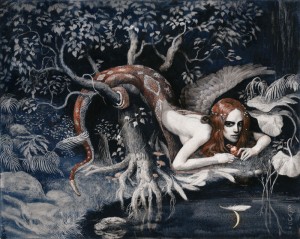
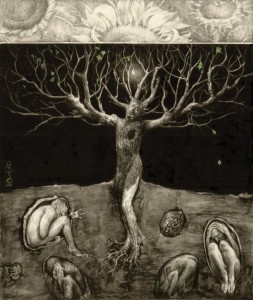

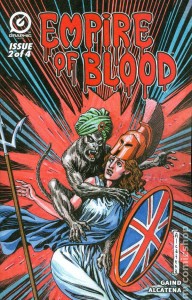


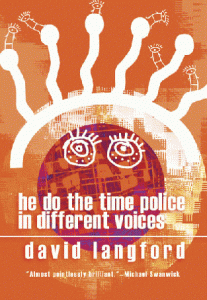 he do the time police in different voices
he do the time police in different voices
